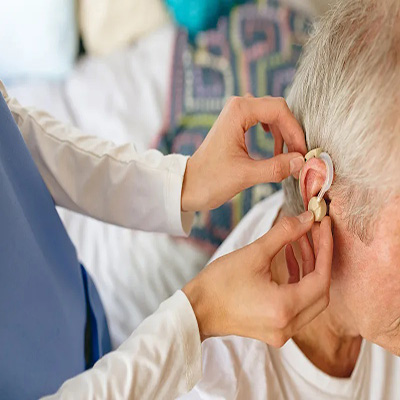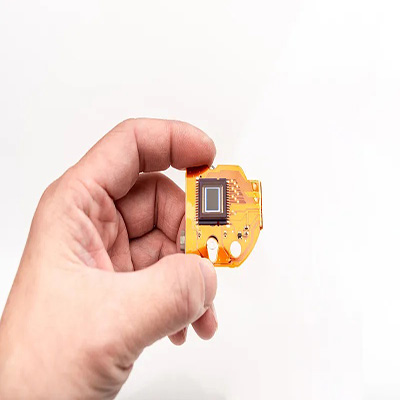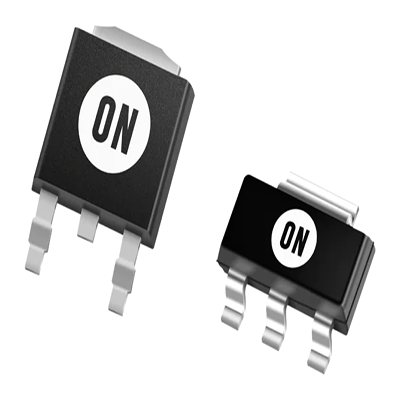Before the appearance of hearing aids, hearing-impaired people could only use a trumpet-shaped shield behind their ears to amplify the sound. Later, some simple hearing aids began to appear. From speakers and metal tubes of various shapes and sizes before the 19th century, to today's sophisticated medical devices - hearing aids.
When it comes to hearing aids, you may think that they are only for the elderly. In fact, due to genetic factors, noise exposure, drug allergies, and wrong ear-using habits, many young people are also exposed to the risk of hearing loss. These groups are also potential users of hearing aids.
For urgently needed products in the medical and health field, positive growth has been maintained even during economic downturns, such as the hearing aid industry, which has bucked the trend.

The earliest records of hearing aid equipment can be traced back to 1650. According to an article published at that time, the hearing aid devices at that time included sound tubes, fans and horns.
In 1800, the world's first company to commercially produce passive loudspeakers appeared in London, England. The company produced hundreds of hearing aids, most of which were sound tubes and horns.
In 1892, the world's first electronic hearing aid patent was registered. In the next seven years, hearing aids in the form of toner microphone + earphone + battery box and microphone transmission device appeared, but these devices were only at the prototype stage.
In 1899, the American Akouphone Company mass-produced hearing aids mainly composed of carbon, which were improved and renamed Akouphone the following year. The unit price of this product was US$400, which was equivalent to the average annual salary of American workers at the time.
In 1921, the first vacuum tube hearing aid (electronic tube hearing aid) was born, but the early design of this product was bulky. The smallest one was about the size of a suitcase, and the largest one was as big as a desk.
In 1947, transistor technology promoted the miniaturization of hearing aids. The product's quality and battery life improved, and manufacturing costs dropped significantly.
In 1952, the crossover transistor hearing aid was born, laying the foundation for many hearing aid reference designs.
In-the-ear hearing aids were born in 1955, but in the early days they could only compensate for relatively mild hearing loss.
In 1959, small button batteries appeared, and hearing aids truly entered the "ear canal era."
In 1964, the first integrated circuit hearing aid appeared. The structure of "transistor + resistor + silicon chip" quickly became the new standard for hearing aids.
In 1984, the digital portable hearing aid concept was born, which became the new design reference for many subsequent hearing aids.
In 1988, the deep-canal hearing aid was born. At this point, behind-the-ear, in-the-ear, in-the-canal, and deep-in-the-canal hearing aids have basically taken shape.
From 1990 to 2000, digital hearing aids were officially mass-produced. At the same time, the development of semiconductor chip technology has further improved the performance of hearing aids, and its acoustic feedback processing method has also been upgraded.
Entering the 21st century, hearing aid technology is transforming towards intelligence, and its functions are also becoming integrated.
In January 2020, the Bluetooth 5.2 standard was released. LE Audio provided an improved Bluetooth connection method for hearing aid devices. Since then, hearing aids with lower power consumption and better Bluetooth audio performance have begun to appear.

The chip components of a hearing aid typically include several key elements that work together to achieve audio capture, processing, and amplification, providing hearing assistance. Here's the typical chip composition of a hearing aid:
Digital Signal Processing (DSP) Chip: The DSP chip is the core of the hearing aid, responsible for processing the sound signals captured by the microphone. It performs tasks such as digitizing the audio signal, filtering, amplification, noise reduction, audio processing, and sound optimization. The DSP chip can automatically adjust sound parameters based on the user's hearing needs.
Microphone Chips: Hearing aids typically come with one or more microphones to capture sound from the surrounding environment, converting analog sound signals into digital signals for processing by the DSP chip.
Radio Chip (Optional): Some hearing aids may include a radio chip that allows them to receive audio signals from wireless transmission devices like smartphones or TVs for wireless audio streaming to the hearing aid.
Battery Management Chip: This chip manages the hearing aid's battery power, monitors battery status, and provides low battery alerts.
Bluetooth Chip (Optional): Certain hearing aids have Bluetooth capabilities, enabling them to connect to smartphones, tablets, or other Bluetooth devices for remote control, phone calls, music playback, and other functions.
Storage Chip (Optional): Advanced hearing aids may feature a storage chip for storing user-specific settings and hearing configurations.
Sensor Chip (Optional): Some modern hearing aids may include sensors such as accelerometers or gyroscopes to monitor the hearing aid's position, user activity, and environmental parameters, helping with automatic adjustments to hearing settings.
The combination of these chips allows hearing aids to provide improved sound processing and adaptability to meet the user's hearing needs. Different brands and models of hearing aids may have varying chip compositions, and the specific configuration can differ.

There are many well-known hearing aid brands in the world, and they use different technologies and chip suppliers to produce hearing aids. Here are some well-known hearing aid brands and the chip suppliers they commonly use:
Phonak (belongs to Sonova Group): Phonak is a brand of the Swiss Sonova Group, which often uses its own chips and technology.
Siemens (now Signia): Siemens' hearing care division, now branded Signia, often uses its own chips.
Widex: Denmark's Widex hearing aids usually use their own E-platform chips.
Oticon (belongs to William Demant Group): Oticon is a brand of the Danish William Demant Group. It uses its own Velox chip.
Starkey: Starkey Hearing Technologies in the United States usually uses its own Synergy platform chips.
GN ReSound (belongs to GN Group): GN ReSound is a brand of the Danish GN Group. It usually uses its own LiNX platform chip.
Unitron (part of Sonova Group): Unitron is also part of Sonova Group and uses Sonova chips.
Beltone (belongs to the GN Group): Beltone is also part of the Danish GN Group and uses GN ReSound's technology and chips.
Bernafon (belongs to William Demant Group): Bernafon is a brand of William Demant Group and usually uses Demant's chips.
Hearing aids are a capital and technology-intensive industry with very high market concentration. Currently, more than 90% of the global market is dominated by five major hearing aid manufacturers (six major brands). These include the DEMANT Group from Denmark, GN Hearing Group, and WS Audiology Hearing Group. Their respective brands are Oticon, Phonak, Widex, and Signia. Additionally, the Sonova Hearing Group from Switzerland owns the brand ReSound. The Starkey Group from the United States has the brand Starkey.
Currently, the "big five" manufacturers use their own self-developed chips, while Chinese hearing aid manufacturers source chips from international manufacturers such as ON Semiconductor, IntriCon Corporation, and some local chip manufacturers like Nanjing Tianyue, Haikadi, Aikesheng, Xin Hailing, Muxin Technology, among others. These local manufacturers are striving to catch up in terms of chip technology and algorithms. Furthermore, in the microphone and speaker supplier space, companies like Knowles Electronics from the United States and Sonion from Denmark hold significant positions globally. Saite, as an international hearing aid solution provider, has a solid foundation in silicon loudspeakers and sensors, as well as metal detection technology.




 Need Help?
Need Help?







